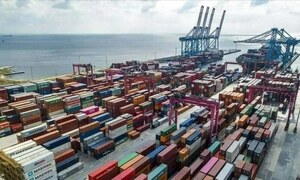Opec and non-Opec producers led by Russia agreed on 30th November, 2017 to extend oil output cuts until the end of 2018 as they try to eliminate a global glut of crude while signalling that they could exit the deal earlier if the market overheats. The producers' current deal, under which they are cutting supply by about 1.8 million barrels per day (bpd) in an effort to boost oil prices, expires in March next year. Opec also decided to cap the output of Nigeria and Libya at 2017 levels (below 2.8 million bpd) without deciding on figures. Both these countries were previously exempt from cuts due to unrest and lower-than-normal production. Iranian Oil Minister Bijan Zanganeh told reporters that Opec had agreed to extend the oil cuts by nine months until the end of 2018 while Saudi Energy Minister Khalid al-Falih said it was premature to talk about exiting the cuts at least for a couple of quarters. Opec would examine progress at its next regular meeting in June and al-Falih added that "when we get to an exit, we are going to do it very gradually...... to make sure we don't shock the market."
An agreement at Vienna about the oil output among oil producing countries does not necessarily mean that they have exactly the same viewpoint and all these countries would strictly abide by the agreement. There have been many instances in the past when some countries violated the agreement on one pretext or the other to suit their own circumstances. Opec and Russia together produce over 40 percent of global oil and their close cooperation has been crucial in roughly halving an excess of global oil stocks since January and stabilising the oil prices. While Opec would like to reduce its output to raise prices somewhat, Russia is concerned that the extension in cuts throughout the whole of 2018 could result in spike in crude production in the US, which is not participating in the deal and, as such, is free to determine its own output, depending on its own interests. US shale oil production, which has effectively triggered the global oil glut in recent years and reduced the prices by more than half, is another worry for the oil exporting countries. Scott Sheffield, Chairman of Pioneer Natural Resources Co, has already said that "if producers in the US increase their rig count over the next few months due to higher prices then I expect another price collapse by the end of 2018." On the other hand, if most of the shale companies decide to maintain their current rig counts and use all the excess cash flow to increase dividends back to their shareholders, the situation could be different. Another worry is that the market could witness supply shortages and a surge in prices if there is a risk to oil supplies. Gary Ross, a veteran Opec watcher and founder of Pira consultancy, has noted that "in Iraq's Kurdistan, there is a major risk to oil exports because of tensions with Baghdad, in Libya militants are still fighting, in Nigeria the risks of disruption are significant, Venezuela is on the verge of default, Iran could again face US financial sanctions and even in Saudi Arabia political risk is on the rise." With situation like this, nobody could really guess about the behaviour of prices after a couple of quarters when the regular meeting of Opec would be due in June, 2018.
Although Pakistan does not have a role either in the supply situation or price determination of oil prices in the international market, it has a great stake in the evolving scenario due to its almost total dependence on the imported oil for running the economy. If the prices increase in the global market for one reason or the other, the balance of payments situation of the country, which is already under a great deal of stress, would deteriorate further, forcing our policymakers to borrow more from abroad or make major structural reforms in the external sector of the economy. Foreign exchange reserves held by the SBP could dwindle further and inflationary pressures in the economy could re-emerge. In our view, the government needs to monitor and analyse the situation very closely and make appropriate adjustments at the right time.
BR100
11,839
Decreased By
-27.2 (-0.23%)
BR30
35,827
Increased By
129.6 (0.36%)
KSE100
113,657
Decreased By
-491.7 (-0.43%)
KSE30
35,775
Decreased By
-177 (-0.49%)

























Comments
Comments are closed.